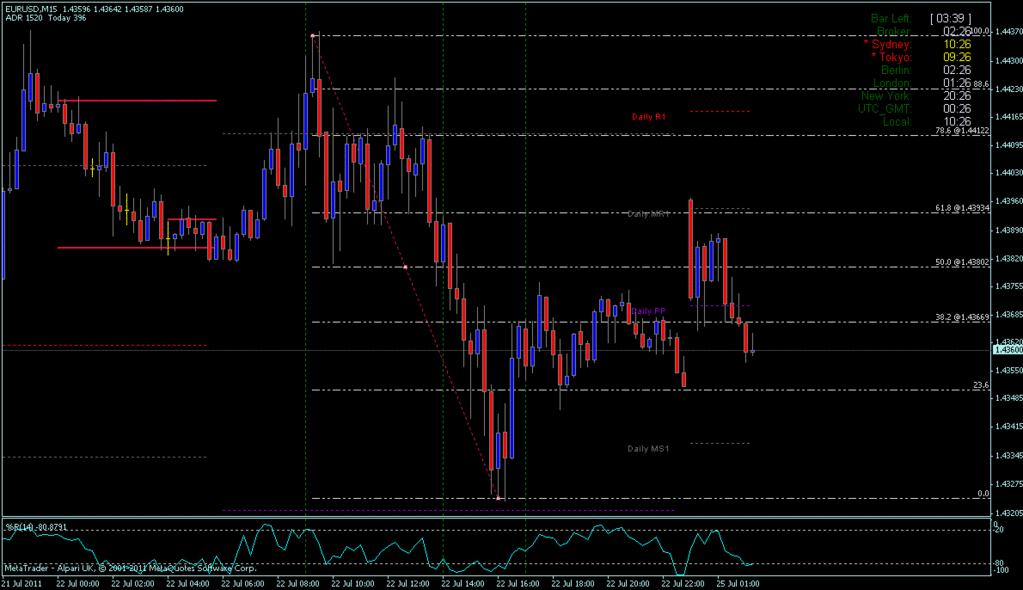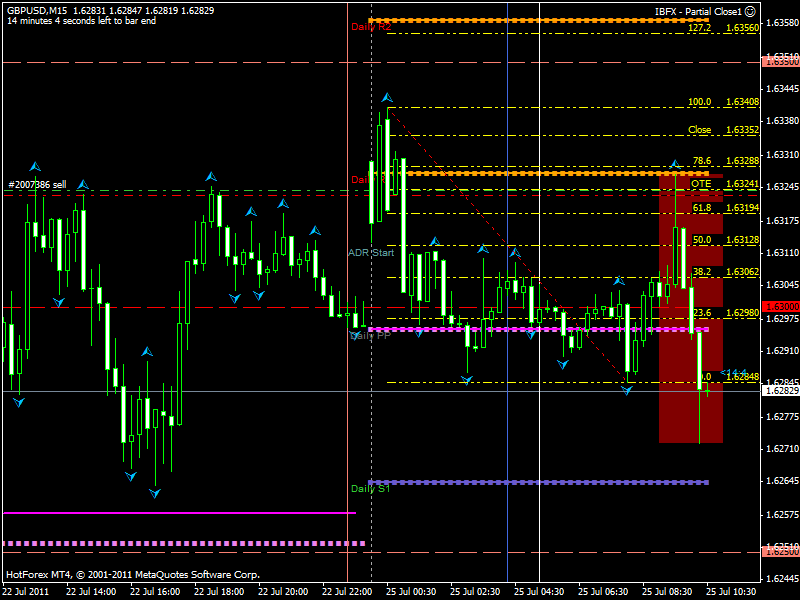I wouldn’t say I am a Elliot fan… however, I may add this might work for you. Although, I do not count waves or such… but rather swings within swings.
All in good time… :57:
I do not think of myself as a model of any one particular Trader. I’m what you might call… a “kitchen sink” Trader… I have a little of everything in the whole.
 Thank you for your interest and appreciation!
Thank you for your interest and appreciation!
I have a collection of Trading Patterns I will be sharing very soon. Just stay tuned and you will get the skinny…
[B]GLGT [/B]:57:
Found it , many thanks
Hey everyone
Here is a chart of Sunday open trade we discussed in the chat room today.
Please add any comments
Thanks
Jack

A well thought out trade Jack. A great way to set off the week 
The only comment I have is the difference in broker charts, my alpari charts don’t show the first hour like yours.

Just a small point that we don’t all see the same things at the same time.
Wally
Dang, missed that chat. ICT is there a posting when you are in the chat having a meeting? Or do we just monitor it when you are online?
Thanks,
Z
I found that last video very helpful.
Still on demo trading, my consistency has been… ‘eh’ so far, but still a bit up overall and still in good shape due to money management.
It has been very, very hard for me to let winning trades ‘run’… and I’ve given up on some very good setups by saying: “Ah, I’m up 10 pips, let’s just take it.” But that’s no way to operate if risking 30 pips on a regular basis. Over time, just one 30 pip loss will eat three 10 pip winners. So that’s been the internal battle here. I’ve actually found it helpful not to watch the charts and do something else, while in a trade. The big wins have always come when I wake up to find I’ve hit the TP overnight. Prevents me from meddling with it.
Trailing stops have also been iffy on a winning trade, if I have to step away. Any general rules about using these once well above breakeven? I’m having a hard time figuring out any optimal strategy with a TS.
My short for LO

Got part out at +30, stop at BE+1, Looking for a few more pips being that we’re in a daily OTE short.
Thanks ICT!
P.s. sorry for the cluttered chart lol
Hi Desmond,
I had the same issue few weeks back and ICT advised to reduce the position size significantly. That helped on my trading.
Cheers,
GLGT
Great resource, I too am looking forward to new videos.
Being that my fist LO trade was a zero risk trade (stop at BE+1) and another OTE short presented itself, I took it. I cut risk back so that even if this trade was a complete loser, I’d be breakeven for the day.
This trade hit +30, I took out a potion, stop is at BE+1. Two trades riding now. We’ll see what happens.
I’m still learning but your trades look perfect to me, great charts for a newbie like me to study and learn.
Brilliant!!!
Hello, Desmond
I’d like to weigh in here, and address the issues you raised.
Regarding your difficulty in letting profits run: This is a very common problem, which almost every trader has had to contend with. (I speak from personal experience.) We’ve seen the market give us a tiny profit, and then take it all back, so many times, that it’s quite understandable that we want to grab the tiny profit before it’s gone.
FX280 suggested reducing your trade size. This is a good short-term, stop-gap measure which might take some of the anxiety out of your trading, while you address the real problem. But, reducing your trade size merely treats the symptoms of your problem — it doesn’t get at the underlying ailment.
The underlying ailment is your focus on how many pips you are “up” or “down”, and — worse — how much money you are “up” or down". Let’s do a quick overview of the basic ICT trade-management technique, to illustrate how your focus should be on something else, entirely.
Michael teaches you how to find high-probability entries, how to set stop-losses, and how to set (or plan) take-profit points. In other words, he teaches you how to plan your work. It’s up to you to work your plan. And, in order to do that, you have to trust the plan.
With apologies, in advance, to Michael for oversimplifying his trade-management methodology, here is what he is teaching:
[B]1.[/B] Find an OTE, or other high-probability entry point, based on market structure and price action.
[B]2.[/B] Determine an appropriate stop-loss, based on what your chart is telling you — NOT based on your pain threshold.
[B]3.[/B] Determine your position size such that the combination of stop-loss and position size represents approprite risk, expressed as a percentage of your trading funds.
[B]4.[/B] Plan to scale out of your (profitable) trade in two, three, or four steps, depending on market structure and price action, and depending on how many lots you have onboard.
Let’s assume that your position size is 3 lots (nano-lots, micro-lots, mini-lots, whatever), and let’s assume that your charts indicate several levels that price is likely to reach for, as your trade moves further into profit.
With 3 lots onboard, you can conveniently scale out of your position in 3 steps, closing one-third of your position at each step. Scale out of your position as follows:
[B]5.[/B] At +20 pips, close one-third of your position. Move your stop-loss to break-even.
[B]6.[/B] Close the second and third portions of your position at the TP points suggested to you by your chart — NOT at points that will earn you x-number of pips, or x-number of dollars/pounds/euros/whatever.
[B]7.[/B] After you have closed the first third of your position at +20 pips, and moved your SL to BE, your SL will be only 20 pips away from price. You will probably want to let price move further into profit before you consider trailing your stop (a 20-pip TS is just begging to be picked off). If you choose to trail your stop — and, if so, by how many pips — these are judgment calls.
[B]8.[/B] If you are stopped out, either for a loss or with a profit, accept it. And move on.
In my summary of the basic ICT trade-management technique, note the following: Number of dollars (pounds, euro, whatever) figures into this plan only once — in step 3; and, number of pips gained (or lost) figures into this plan only once — in step 5. The rest of the plan is predicated on price action, and what action you will take at each predetermined price point. If you trust your plan, you can ignore the number of pips in play, and you can ignore the number of dollars on the table.
Put your focus on actionable price levels, not on numbers of pips, or numbers of dollars.
Your primary adversaries are greed and fear. Step 5, above, is intended to lock in a small profit, and to make the remaining portion of this trade risk-free. In so doing, it removes your biggest fear: the fear of a losing trade — of suffering an overall net loss.
But, what about your secondary fear — the fear of giving back some, or all, of your subsequent profit? This is where you must control your focus. This is where you must become indifferent to the potential number of pips you stand to earn, if your trade proceeds to your next TP, and then on to the next one after that. And, most importantly, this is where you must ignore the dollar-amounts involved.
This is all much more easily said than done. And, unfortunately, no one can do it for you. You will have to train yourself to put your focus where it needs to be. This reminds me of a couple of lines from the Kenny Rogers song, [I]The Gambler[/I], about poker players:
You got to know when to hold ‘em, know when to fold ‘em.
Know when to walk away and know when to run.
You never count your money when you’re sittin’ at the table.
There’ll be time enough for countin’ when the dealin’s done.
The rest of the lyrics, for anyone who’s interested — The Gambler Lyrics - Kenny Rogers
I’m not a fundamental guy what so ever but could this sideways movement be due to the fact that the US still has not reached a decision on the debt ceiling and their plan? I did miss that trade on the London Open, I stayed out as I did not know if it would bounce off that upper pivot because we are in a bull flag on the daily. I did however take a quick scalp in the NYO. Full T/P is at 30 pips on this one as it looks like a ranging Z day stuck to the central pivot if I am not mistaken? 
[B]UPDATE[/B]: Took 20 pips at the nearest lower resistance closing out 1/3 of the position and moving stop to BE. Any profit is better than a loss in this type of day IMO.
[B]UPDATE[/B]:Coming into London close, price has moved higher. Stop loss is BE+1pip on the rest of the 2/3 position. Dealing range is in risk of being broken and I could get taken out.
[B]UPDATE[/B]:Emotionally: I need to walk away or dig my eyes out with a spoon… It’s not healthy to keep looking at this consolidation.
[B]UPDATE[/B]: And there she blows. BE on 2/3 20 pips on 1/3. Walking away for the day, seems like I was on the other end of the sentiment going into the London Close. I should have taken 70% at 20 pips because of the lack of movement when I had the chance. Live and learn.
We’re into NYO and I’m eyeing up potential “Z” day trades for LC on both Cable and Fiber (see Zneves’ chart above). I haven’t managed to take one of these yet and am struggling a bit with directional bias. My current bias would be long on cable and short on fiber (don’t worry I won’t take both!).
Seemed like a good idea at the time, EURUSD, 1st TP +30 was hit but them things went a bit pear shaped and I moved my stops on the remaining 2 lots to -10 and was take out. So +6 after spread.

CPP + S&R + OTE
Wally
P.s. like Zneve poited out, it’s like everyone is waiting on the U.S to get it’s act together.
I was looking at the COTs and futures on the weekend and to me it looks like they’re getting ready to hammer the USD, ofcause I could be reading them upside down and the opposite happens. Hope that helps. lol
Just waiting for that hammer :), potential credit being dropped to AA ;-).
Wade that was par excellence my dear friend… Way To Go!  Excelsior!
Excelsior!
[B]GLGT[/B] :57:
